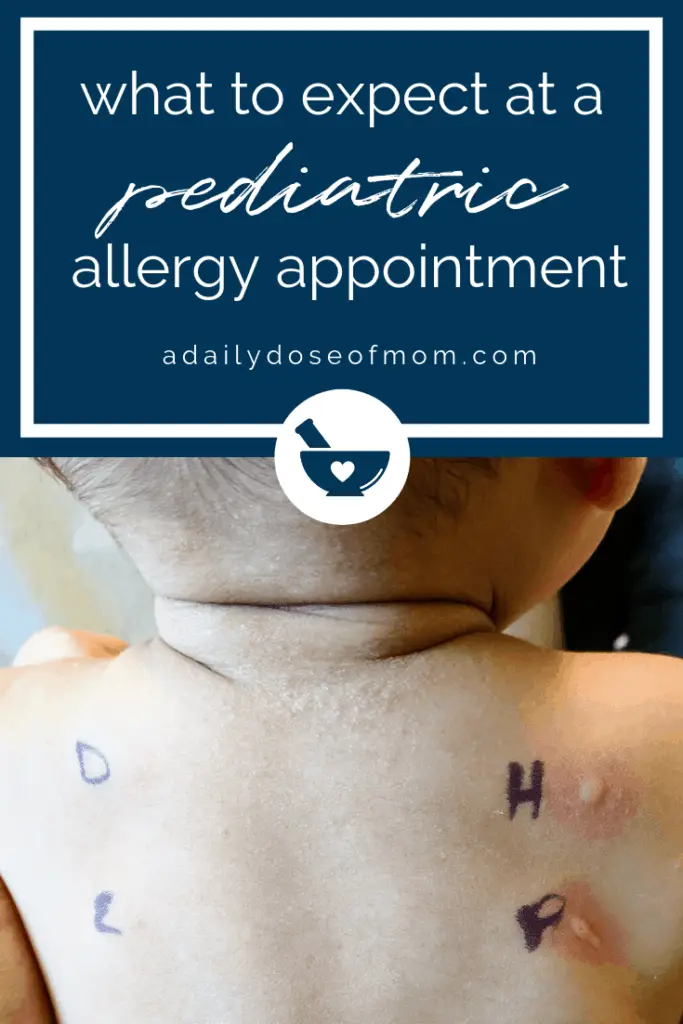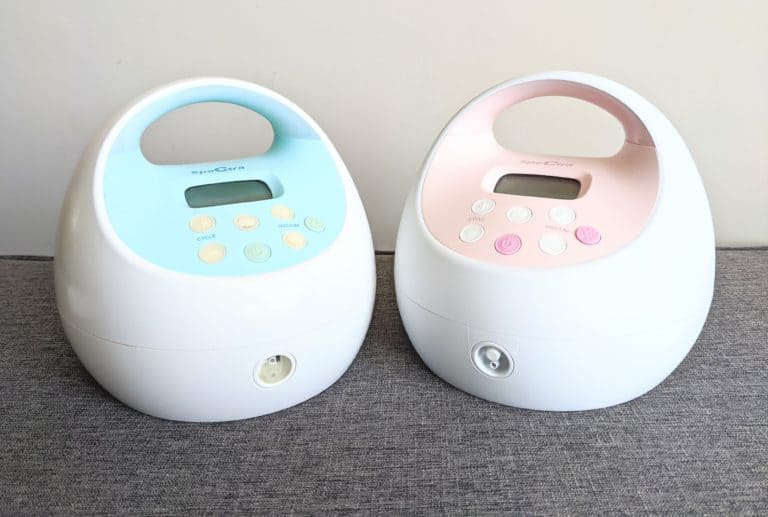What to expect at a pediatric allergy appointment
Allergies can be a scary thing, especially for children. What’s even worse is if your little one has an appointment with an allergist and you not only have to prepare for their anxiety, but yours as well! Let’s go over what you may expect at a pediatric allergy appointment to ease some of your nerves. Please note, this is our personal experience and your experience may be different. The information provided in this blog post is not intended to replace a one-on-one relationship with a qualified healthcare professional and is not intended as medical advice.
Unfortunately, I get to write this blog post because Remy is allergic to peanuts! Of course, we only know that for sure now because of an office visit with an allergy doctor. When Remy was about 7 months old, we gave him some peanut butter with banana for breakfast. We didn’t expect any issue as there is no family history of peanut allergy or any kind of allergies, actually. About 5 minutes of Remy’s first bite of peanut butter, he broke out into severe hives all over his face wherever the peanut butter touched. And poor Remy, he would scratch his itchy spots and rub his entire face, and because he had peanut butter on his hands, he would make his rash even worse. In the photo below, Remy’s rash had decreased a bit as it was about an hour after eating the peanut butter.

We were able to see the pediatrician that day, who thought it was most likely the peanut causing Remy’s reaction. The doctor prescribed hydrocortisone (steroid) cream and told us to avoid peanuts until we could see the allergist to confirm the allergy. In order to allow Remy’s immune system to settle down, the allergy appointment wouldn’t be for another two months.
Preparing for the appointment
In order to prepare for the allergy appointment, you may be asked to avoid antihistamine (allergy) medicine or steroid cream on your little one about a week prior. This is to prevent any false negatives during the actual skin tests. This wasn’t a problem for us as we were using the steroid cream only sparingly on some of Remy’s eczema rash.
Beginning of appointment
The beginning of our allergy appointment started like most other pediatric appointments where the staff takes vitals, such as length, weight, and oxygen saturation. Remy doesn’t particularly care for this part, but it’s important information to keep up-to-date, especially for growing babies! We made up for it by taking selfies while waiting!

The nurse then explained to me and my husband what the skin testing process would be. Since Remy also had eggs the same day as the peanut butter, the allergist also wanted to test for eggs. In order to test for the allergy, the nurse would use a small plastic toothpick that would prick the surface of the skin and deposit a small amount of the diluted allergen. She showed us a clean toothpick and allowed us to feel it and prick our own fingers. It didn’t hurt at all – just a little poke!
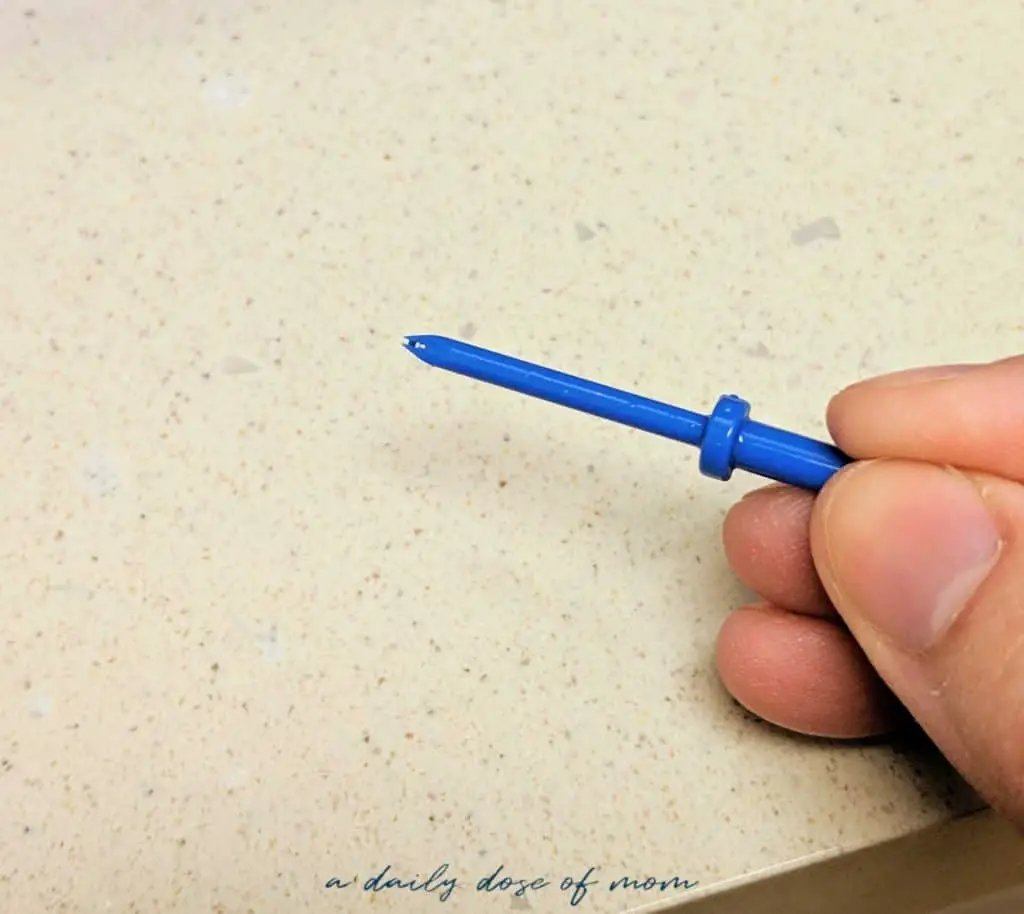
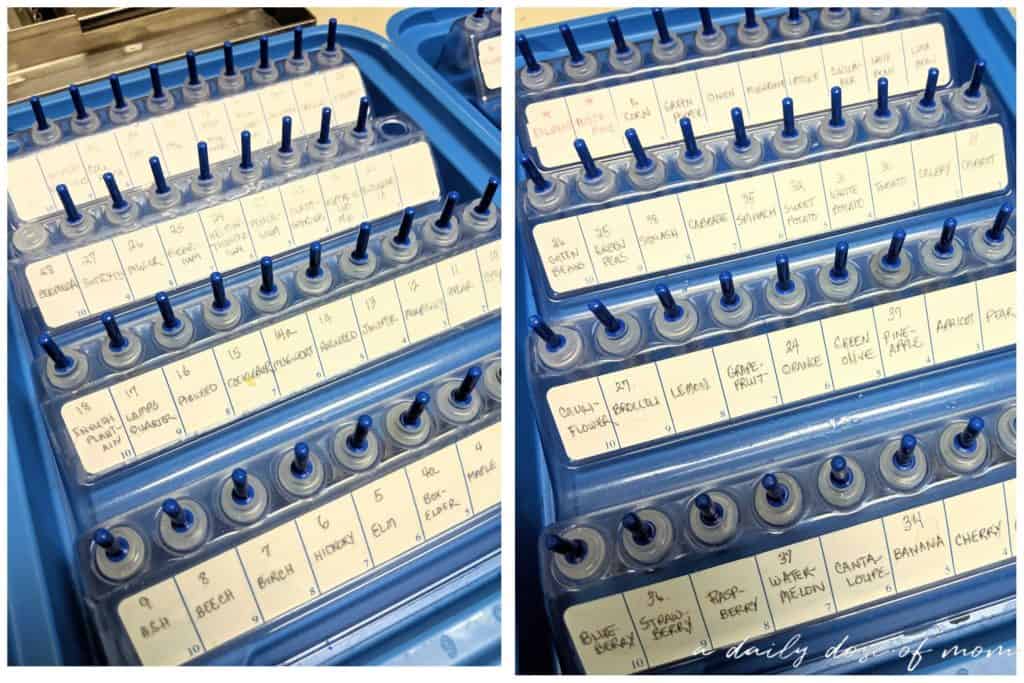
Allergy skin test
Once we felt we understood the skin testing better, we were ready for Remy to undergo his testing. Because Remy was a little young, they do the skin testing on the back so they can’t scratch their skin if it get itchy. Older kids and adults can have their allergy testing done on their forearm. My husband was asked to hold Remy as if he were hugging him and tuck Remy’s arms under his arms so they wouldn’t get in the way.
The nurse wiped Remy’s back with an alcohol pad and allowed it to dry. Then she wrote four letters space out on his back: “D, H, E, P”. D (top left) is for distilled water, or the negative control, since we know that will be no allergic reaction. H (top right) is for histamine, which is a control for a positive reaction. E (bottom left) is for eggs and P (bottom right) is for peanuts.
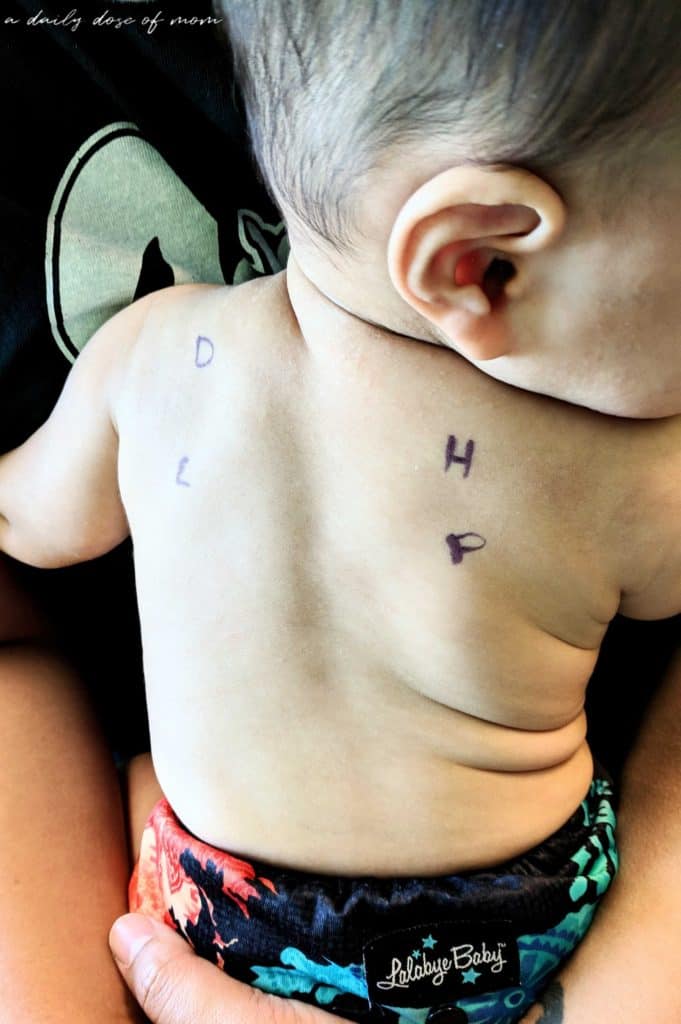
After this, the nurse then used a separate toothpick to apply a small amount of dilute allergen. Remy did so well at this part! He didn’t cry and he was more interested in “What’s going on back there?!”
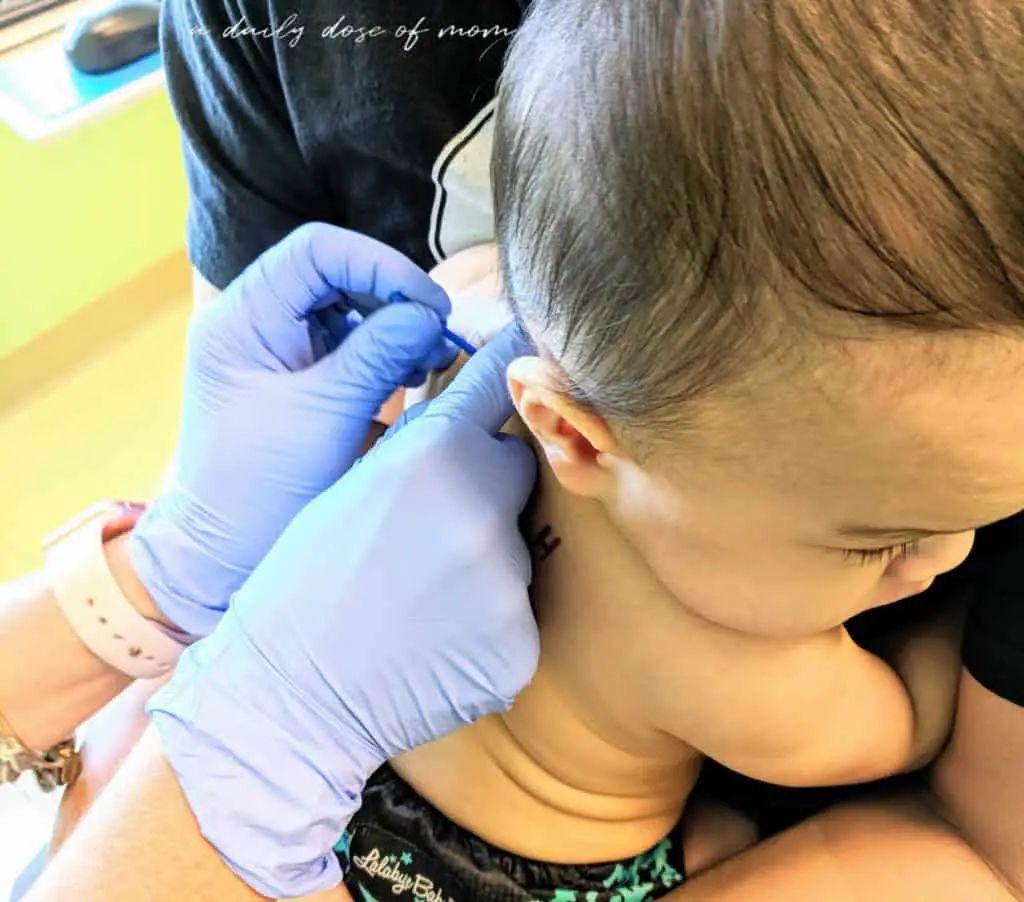
The waiting game
After the allergens have been applied, it’s time for the waiting game! This game is not so easy with a squirmy baby who is probably itchy! We were advised to wait for 15 minutes to let any reactions to occur. We passed the time by nursing, playing peek-a-boo, and looking out the window.

Results
Once the waiting game is over, it’s time for the results! For a positive reaction, you will see a red, raised, itchy bump, also known as a wheal and it has a surrounding flarel. This wheal and flare is measured and recorded. The larger the wheal and flare, the greater the sensitivity to the allergen. A negative reaction will be flat and not itchy, but the spot may be a little red from the prick.
Remy’s skin testing showed that he reacted to the peanuts, but not to the eggs. As you can see, the “E” for eggs (bottom left) looks very similar to the negative control, “D” for distilled water (top left). In contrast, the “P” for peanuts (bottom right) had a wheal that was similar to “H” for histamine (top right).

After the appointment
Based off of the skin testing results, the allergist confirmed that Remy was allergic to peanuts. We were educated to avoid peanuts, but to continue to expand his diet. Also, peanuts are not the same as tree nuts, such as almonds, cashews, and walnuts. Remy was prescribed the EpiPen in case he did come into contact with peanuts and had an anaphylactic reaction.
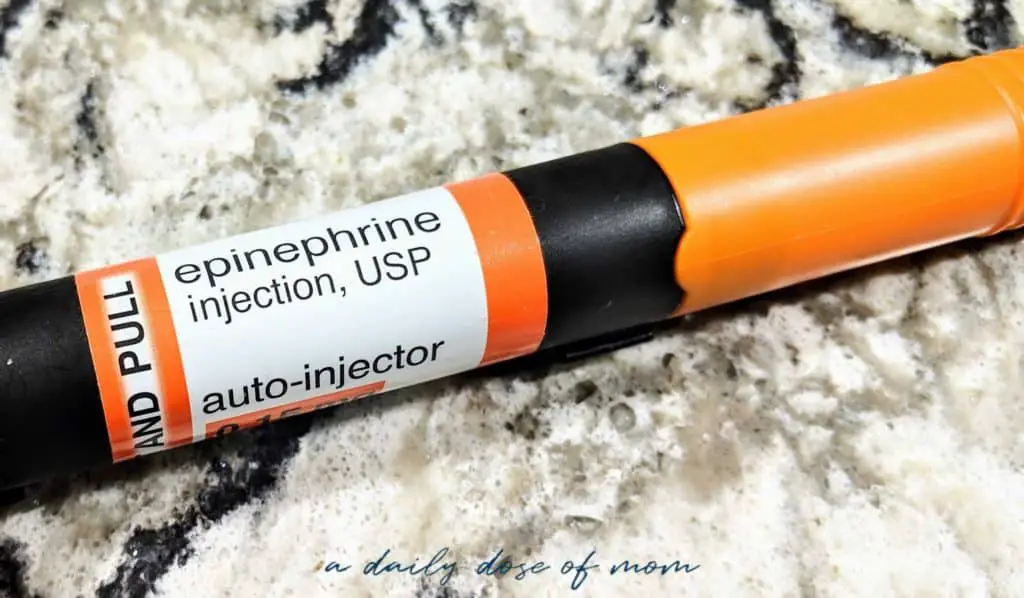
TIP: If you are prescribed the EpiPen, ask for two separates pens so you can keep one at school and the other at home/diaper bag.
The allergist recommended for Remy to undergo skin testing again at age two as about 20% of kids do eventually outgrow their peanut allergy. ????So far, we have been managing very well without peanuts – Remy LOVES almond butter! Luckily, his school is a nut-free school, but we have an EpiPen there, just in case.
And that is our experience with a pediatric allergy appointment! Overall, Remy was a champ and did a lot better than I had hoped for. I hope this posts alleviates your fear if you have an allergy appointment coming up. Please remember that our experience may be different than yours. Have you or your little ones seen an allergist? I would love to hear your experience!

